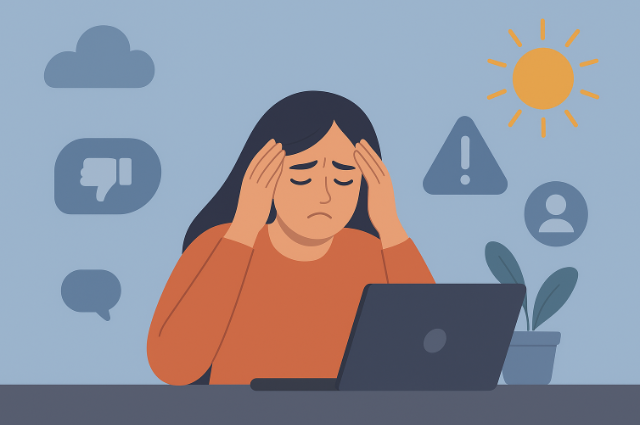
In today’s hyperconnected world, social media users are increasingly taking extended breaks after years of manic online activity. Under the label of “detox,” people are stepping back to reconnect with their real-life surroundings and natural environments, following a long period of virtual engagement with trends, news, and global events. But what drives this collective urge for escape? Has being chronically online created a new form of mental and emotional exhaustion — what we now call digital burnout?
The Rise of Digital Fatigue
Every new technology feels exciting at first, especially when it fits within comfort zones and respects boundaries. But with time, what once seemed liberating can transform into a burden. Social media, once a space for connection and creativity, has now become a source of stress, pressure, and repulsion.
The universal online experience is dominated by unrealistic standards — flawless photos, luxury lifestyles, constant productivity. Yet these curated snapshots do not reflect reality. Instead, they create unconscious comparisons, leaving users questioning their worth. This illusion of “performative perfection” forces individuals to adopt false identities online.
The Crisis of Comparison
Social media stories overflow with vacation photos, café explorations, new jobs, and personal milestones. While aspirational, these highlight reels often spark hidden frustration. Not everyone can afford such lifestyles. For many, this gap between real and virtual life creates not envy, but a personal crisis — a nagging sense of inadequacy.
Online Bullying and Toxicity
Another dimension of digital burnout is cyberbullying. Vulnerable groups such as women, LGBTQ+ creators, and unconventional voices are often the target of online attacks. The anonymity and reach of social media make bullying easy, spreading fear and forcing individuals to conform to avoid judgment. This constant pressure further deepens anxiety and burnout.
The Political Overload
Beyond lifestyle content, social platforms are flooded with hyper-political discourse. Online debates often spiral into toxicity, with opinion-holders attacked, silenced, or mocked. Topics like patriarchy, misogyny, body image, and identity become battlegrounds, creating endless chaos. Instead of fostering democracy, social media can sometimes amplify division and hostility.
The Tangible Reality of Digital Burnout
The cumulative effects — comparisons, unrealistic standards, bullying, and political noise — create a fractured sense of self. Users are left juggling multiple “masks” online, exhausted by the demand to appear perfect. The result is mental fatigue, anxiety, and emotional exhaustion, collectively termed digital burnout.
While the phenomenon may sound virtual, its effects are tangible. More people are disconnecting from screens and seeking refuge in nature, relationships, and offline experiences. Social media, once a playful escape, now reflects a harsher reality — one that leaves users caught between the digital and the natural.
Conclusion
Digital burnout is no longer a buzzword but a real psychological and social concern. As social media continues to shape identities and relationships, it is vital to recognize its toll on mental health. Striking a balance between the online and offline world is no longer optional — it is essential for emotional resilience and well-being.
